Small country with a big heart
In organizing this trip, we express our deep gratitude to our friend from Georgia Kobe Cicagi, he organized such a wonderful vacation for us. It was a spontaneous decision to go to Georgia, just to take a walk for the weekend, the preparations took 5 days, since a new airport was opened in Kutaisi, Vizeir (budget airline) began to fly, and if you plan a vacation, you can fly away for ridiculous money.
 Departure at 3 am, meet the dawn
Departure at 3 am, meet the dawn
On the world map, Georgia seems to be a very small country compared to others. However, it can be called, rather, a whole continent, on which mountains, rivers, steppes, deserts, tundra, glaciers, beaches and taiga fit.
Peoples of more than 7 nationalities live here: Georgians, Armenians, Azerbaijanis, Greeks, Assyrians, Kurds, and even local blacks were seen. Christianity of 6 types, Islam of two types, Yezidism and mysterious pagan cults coexist right there.
Georgians are very hospitable people. Most of the population is fluent in Russian. You are not a client here, you are a guest for them. The country is famous for simple human joys: clean water from springs, fresh bread from a village oven, amazing wine and cheese, bright sun and mountain air.
We arrived, went through customs very quickly, we were met by a Coba guide, whom I met on the Internet, without wasting time, we went to get acquainted with the sights of the country
 Airport « Kopitnari is new, nice, and has been accepting passengers for almost a year
Airport « Kopitnari is new, nice, and has been accepting passengers for almost a year
The first day we will spend in Kutaisi. Kutaisi - in the past, the ancient capital of the Kingdom of Colchis, now the second largest and most important city in Georgia, is located on the banks of the Rioni River. Kutaisi retains the features of a medieval city with an intricate network of streets and lanes. In the right-bank part - 1-2-storey white stone and brick residential buildings with glazed galleries, located one above the other, climb the steep slopes of the mountains.
There are many sights in Kutaisi and its environs, such as the Temple of Bagrat in which King David the Builder was crowned and this temple was included in the list of UNESCO World Heritage Sites. The Bagrati Temple was built in the 10th-11th centuries, during the reign of the Georgian king Bagrat III. There is no need to look for the Bagrat Temple at all - it can be seen from almost anywhere in the city.
 Bagrat Cathedral - Church of the Assumption of the Virgin.
Bagrat Cathedral - Church of the Assumption of the Virgin.
One of the largest temples in Georgia. David IV the Builder was crowned in this temple. The Bagrati Temple is unusual. This is the only large temple in Georgia built on a mountain.
The Motsameta Monastery stands over the turbulent Rioni River and is surrounded by greenery. According to legend, the monastery was built on the site where Muslim invaders executed the Georgian princes David and Constantine, who refused to convert to Islam. The ark with the relics of Saints David and Constantine is located in the main church. There is a belief that if you pass under the ark three times and, having venerated the relics, ask the Saints for something, they will certainly help.
 Rioni River mentioned in the myths of the Golden Fleece. And this is no coincidence: it was in Rioni that the locals mined gold
Rioni River mentioned in the myths of the Golden Fleece. And this is no coincidence: it was in Rioni that the locals mined gold
 Monastery of St. David and Constantine (Martyrs)
Monastery of St. David and Constantine (Martyrs)
 According to the legend the monastery was built on the site where the Muslim invaders executed the Georgian princes David and Constantine, who refused to convert to Islam
According to the legend the monastery was built on the site where the Muslim invaders executed the Georgian princes David and Constantine, who refused to convert to Islam
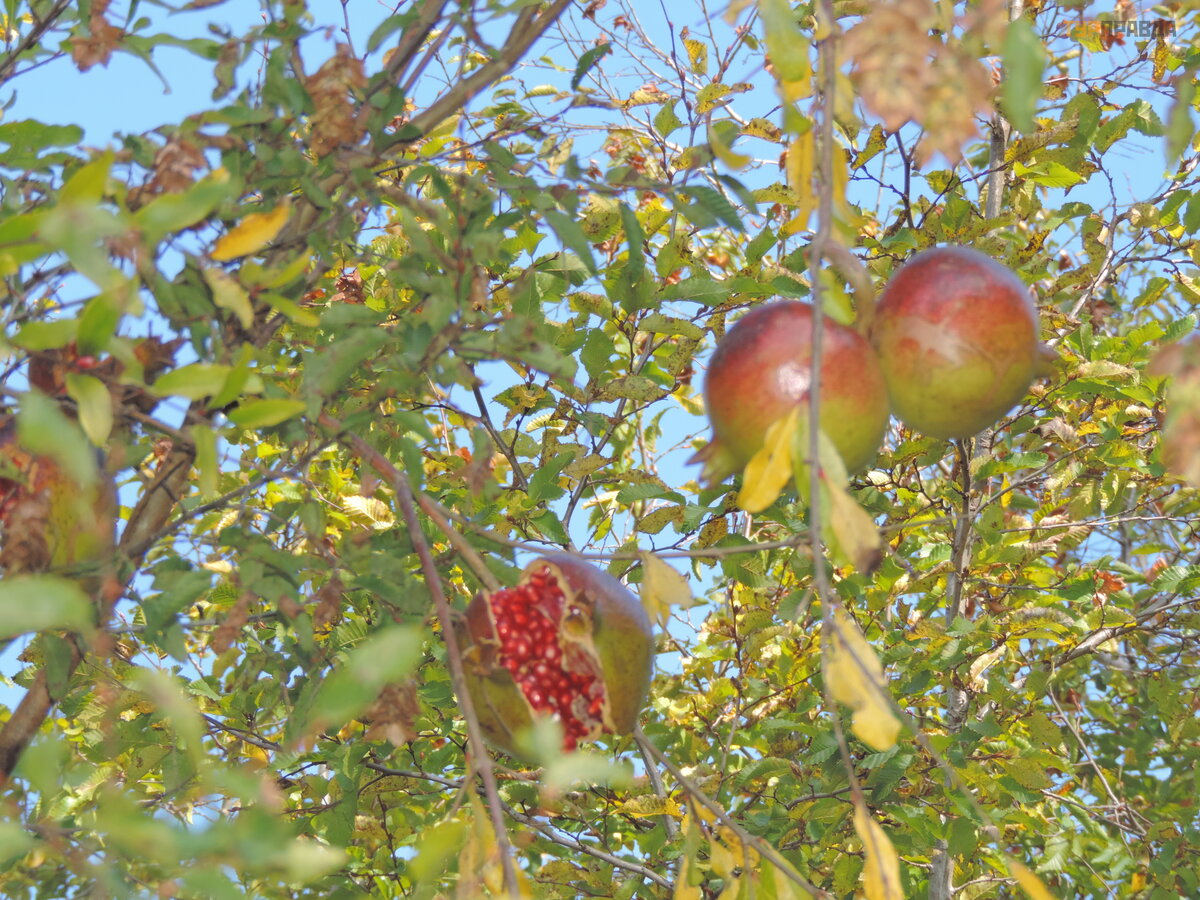 Pomegranate tree , just now it's time to ripen
Pomegranate tree , just now it's time to ripen
Galata Monastery. The monastery contained religious shrines throughout the Christian world, such as the Khakhul Icon of the Mother of God. During the reign of Queen Tamara, the monastery was one of the largest spiritual centers in Western Georgia, where more than 300 monks lived. The Gelati architectural complex is under the protection of UNESCO as an object of cultural and historical world heritage.
 Galata Monastery
Galata Monastery
 The main building of the complex is the Church of the Assumption of the Blessed Virgin Mary. The famous Gelati mosaics and frescoes dating back to the 12th-18th centuries have been preserved in this church.
The main building of the complex is the Church of the Assumption of the Blessed Virgin Mary. The famous Gelati mosaics and frescoes dating back to the 12th-18th centuries have been preserved in this church.
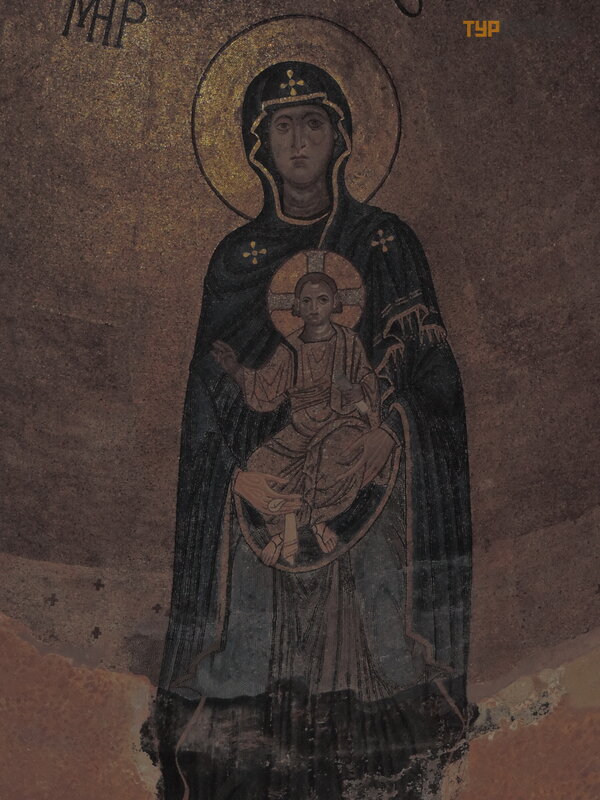 Brilliant workmanship performance make the Gelati mosaic a monument of world significance.
Brilliant workmanship performance make the Gelati mosaic a monument of world significance.
Source. The purest and most delicious water flows from the mountains
 With this mountains the Golden Fleece was stolen
With this mountains the Golden Fleece was stolen
Sataplia karst caves and Prometheus cave. Sataplia Cave Complex occupies the 3rd place in the CIS, having preserved traces of dinosaurs, after the Rivat Gorge in Tajikistan and the Hodzha-pil tract in Turkmenistan
The reserve became famous after the discovery here in 1925 of a large karst cave with an underground river, stalactites and stalagmites
 The reserve has become famous after the discovery here in 1925 of a large karst cave with an underground river, stalactites and stalagmites
The reserve has become famous after the discovery here in 1925 of a large karst cave with an underground river, stalactites and stalagmites
Here is the pride of the cave - "Stone Heart" - a huge stalagmite, shaped like a human heart.
Interesting observation deck with glass floor
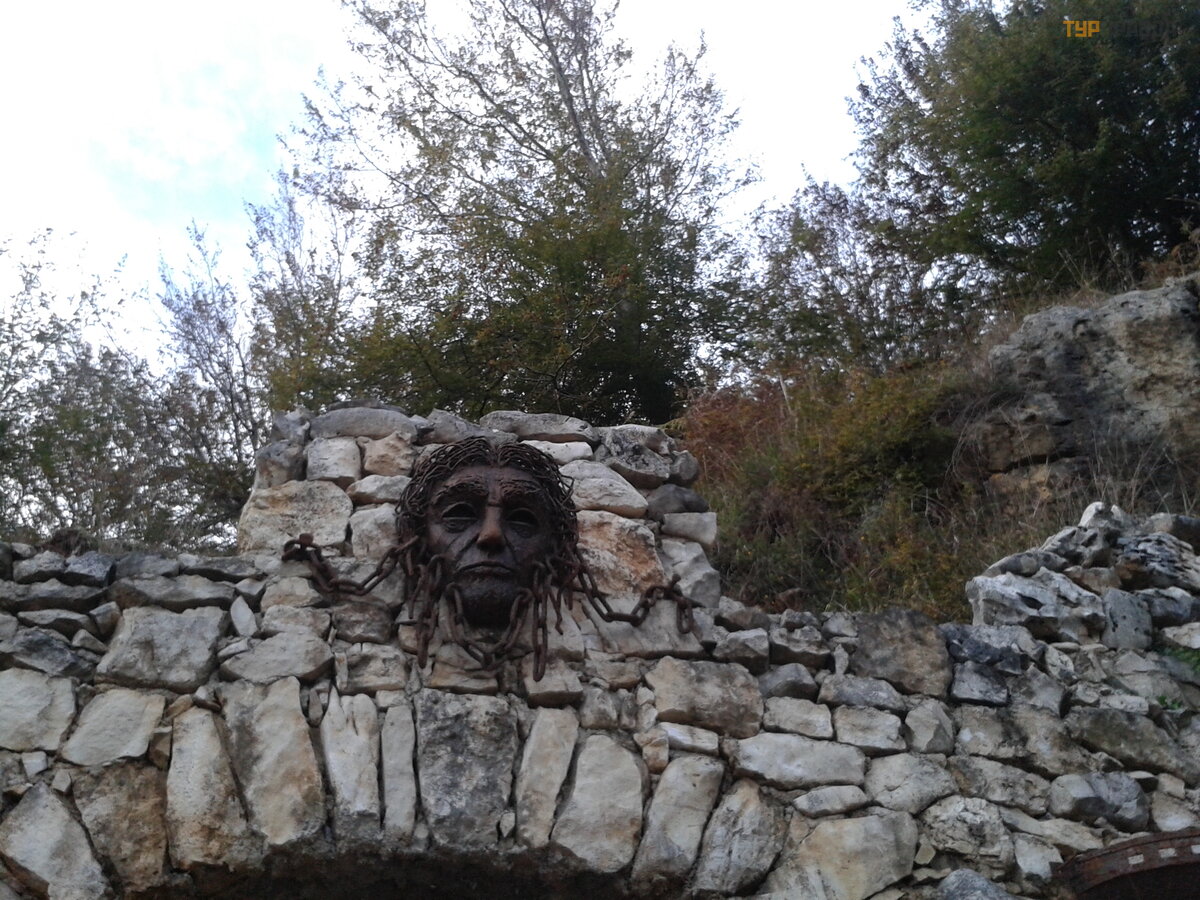 Prometheus Cave
Prometheus Cave
We visited all of this today.
Dinner at the Mirzaani restaurant, on the banks of the Rioni River, with traditional Georgian cuisine. We ordered everything out of hunger.
 I wanted to try real lobio
I wanted to try real lobio
 Khachapuri- swept away in an instant
Khachapuri- swept away in an instant
 Of course khinkali
Of course khinkali
We spend the night in a guest house in a Georgian family.
 In the yard guest house
In the yard guest house
 At the hospitable hosts terrace having breakfast
At the hospitable hosts terrace having breakfast
In the morning we left Kutaisi to the north, then turned to the western road towards Gori.
To the right of the road we saw a town built by the Americans for Georgian refugees from South Ossetia. These are typical houses with several rooms, with all amenities, but the monotony is depressing. Old people, accustomed to live freely in their estates, yearn and die. Among this monotonous plain is the city of Gori, which was seriously damaged during the last war with Russia. In my opinion, a tourist and a curious explorer of the country has nothing to do in Gori itself. It is not clear why Georgian travel agencies with maniacal persistence bring tourists here and include a tour of the Stalin Museum in the program. The museum is the museum building itself, the carriage in which the leader was taken, and the house where he was born. 


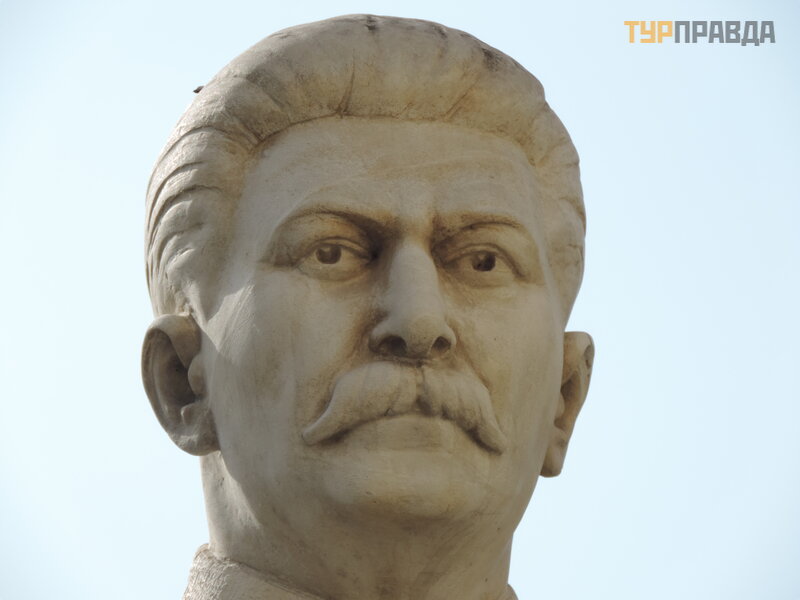
 Goristsikhe fortress is of some interest, but it seems, first of all, for historians and archaeologists. The fortress as a fortress is perhaps ancient (about 800 years old), picturesque and very large. take a photo and move on.
Goristsikhe fortress is of some interest, but it seems, first of all, for historians and archaeologists. The fortress as a fortress is perhaps ancient (about 800 years old), picturesque and very large. take a photo and move on.


 There are only thick walls and grass, so climbing up is only worth it if you want to admire the dreary city, consisting mainly of Soviet panel houses, and the same dreary landscape.
There are only thick walls and grass, so climbing up is only worth it if you want to admire the dreary city, consisting mainly of Soviet panel houses, and the same dreary landscape.
But as soon as you drive 12 km and cross the Kura, a fantastic, alien view opens up in front of you. Among the bare, almost wind-blown rocks stands the cave city of Uplistsikhe, carved right into the sandstone. By the way, once there were forests here, but they were destroyed by dirty orcs - the Mongols
Uplistsikhe (literally translated as God's Fortress) is amazing with its almost 3.000-year history. It is believed that it was formed around 1000 BC. e. , and finally emptied only after an earthquake in the XIX century. Uplistsikhe was the cult center of pagan Georgia.
 After the adoption of Christianity, this city even waged war with Mtskheta. Altars and temples have been preserved here. Most of the rooms and caves are churches and temples.
After the adoption of Christianity, this city even waged war with Mtskheta. Altars and temples have been preserved here. Most of the rooms and caves are churches and temples.
 There are bare walls inside: "Orthodox brothers" from Russia in the 19th century destroyed all the ancient frescoes. In addition, the Russian soldiers left autographs on the walls of the church in the style "Vasya was here.
There are bare walls inside: "Orthodox brothers" from Russia in the 19th century destroyed all the ancient frescoes. In addition, the Russian soldiers left autographs on the walls of the church in the style "Vasya was here.
Here we were caught by the local guide Stalber - a historian and archaeologist, with which an hour and a half more than paid back 15 GEL for the tour.
 Based on my travel experience, if a Georgian guide is 45-50 years old or older, he is an intellectual of high standard who managed to get an education before those sad times when humanitarian aid became more important than humanitarian knowledge. Do not spare money for such guides to do not miss the opportunity to learn a lot about the country and communicate with interesting people. We begin to climb already together with Stalber, listening to a detailed story about the centuries that flew over Uplistsikhe. A strong wind always blows here, it takes away words and sharpens the stone. .
Based on my travel experience, if a Georgian guide is 45-50 years old or older, he is an intellectual of high standard who managed to get an education before those sad times when humanitarian aid became more important than humanitarian knowledge. Do not spare money for such guides to do not miss the opportunity to learn a lot about the country and communicate with interesting people. We begin to climb already together with Stalber, listening to a detailed story about the centuries that flew over Uplistsikhe. A strong wind always blows here, it takes away words and sharpens the stone. .
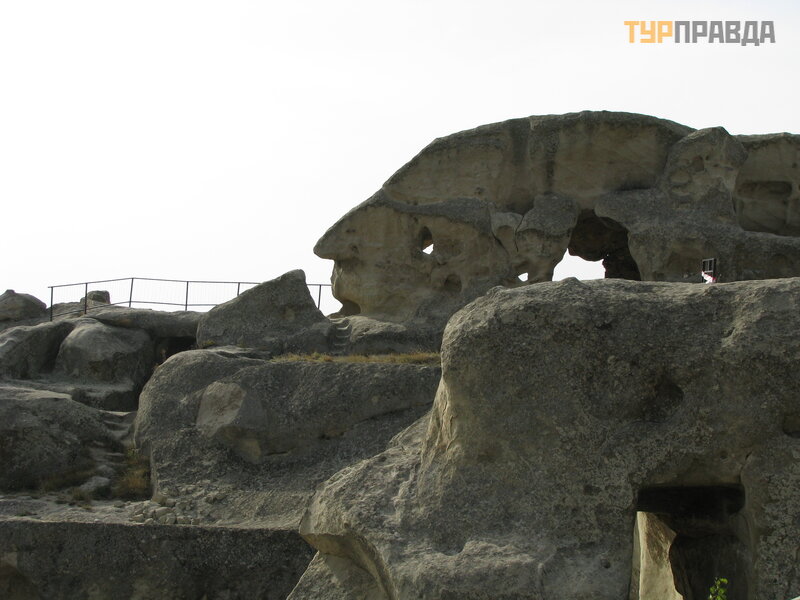
 . After walking along Uplistsikhe, we went further, our path lies in the main temple of Georgia, Svetitskhoveli.
. After walking along Uplistsikhe, we went further, our path lies in the main temple of Georgia, Svetitskhoveli.
Svetitskhoveli is the first and main temple in Georgia, the name of which is traditionally translated as "life-giving pillar". Sveti is a pillar, and Tskhoveli is living or miraculous.
The verb "tskhoveleba", which is close in meaning, means to revive or give life. The temple in its present form has existed since 1010. The history of this place is as follows. There is a legend about the origin of the temple. Allegedly, Elioz, a resident of Mtskheta, served as a soldier in Jerusalem and was present at the crucifixion. After the death of Christ, the guards of the crucified Savior argued about who would get his clothes, and Elioz got the whole-woven and undivided Chiton of Christ, with which he returned home. Sidonia, sister of Eloise, who became a Christian, died as soon as she touched the tunic. She was buried along with the tunic, as they could not free the robe from her hands. A Lebanese cedar grew on Sidonia's grave. Mirian, the first Christian sovereign of Georgia, decided to erect a church over the grave of Sidonia. The cedar was cut down, seven columns were cut out of it, six of them were installed in the church, and the seventh hung in the air.
St. Nino, the famous and revered educator of Georgia, prayed all night, and then the pillar "without the touch of a human hand" fell into place. This pillar streamed myrrh, and the myrrh healed the sick. This is how the temple got its name.
The Life-Giving Pillar is located almost in the center of the modern temple; a stone canopy was built above the Pillar, which is painted with frescoes. Most of the surviving fresco fragments illustrate the history of the Chiton of the Lord and the Pillar itself. One legend is connected with the construction of Svetitskhoveli. “Architect Arsukisdze was invited to build the temple. At the end of the construction, it turned out that the masterpiece he built was much superior to the creations of his teacher. Then the offended teacher slandered the student, and the master's hand was cut off. According to another version, Arsukidze’s hand was cut off by order of the king, so that he could never build anything like Svetitskhoveli. ”
The church celebration of the Life-Giving Pillar falls on the feast of the Intercession of the Most Holy Theotokos - October 1/14. 



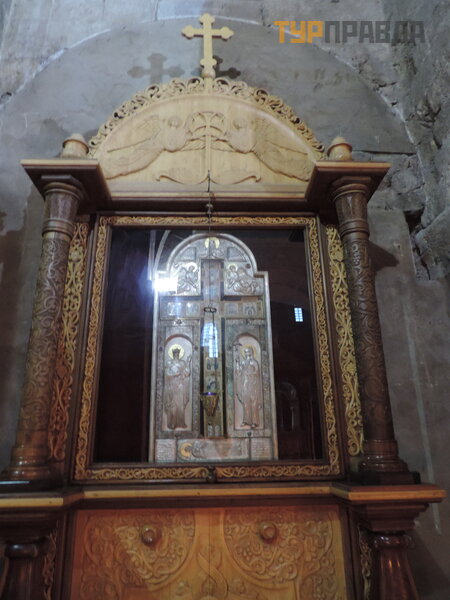

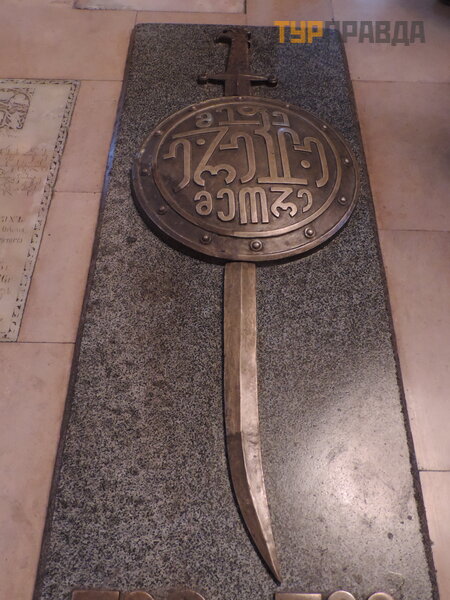

Throughout its existence, the cathedral served as a place of coronation and a burial place for representatives of the royal family of Bagration. In March 2007, the funeral of the first Georgian president, Zviad Gamsakhurdia, took place in Svetitskhoveli.
And we will also climb the mountain, to one of the most famous ancient monuments of Georgian architecture, the Jvari Church (Holy Cross Monastery, VI century). Jvari Church is the most Christian Georgian church. It was built very close to the edge of the cliff.
As a result, it is clearly visible from far distances and from all sides, and it should be noted that it looks very beautiful - it seems that the temple is a continuation of the mountain. 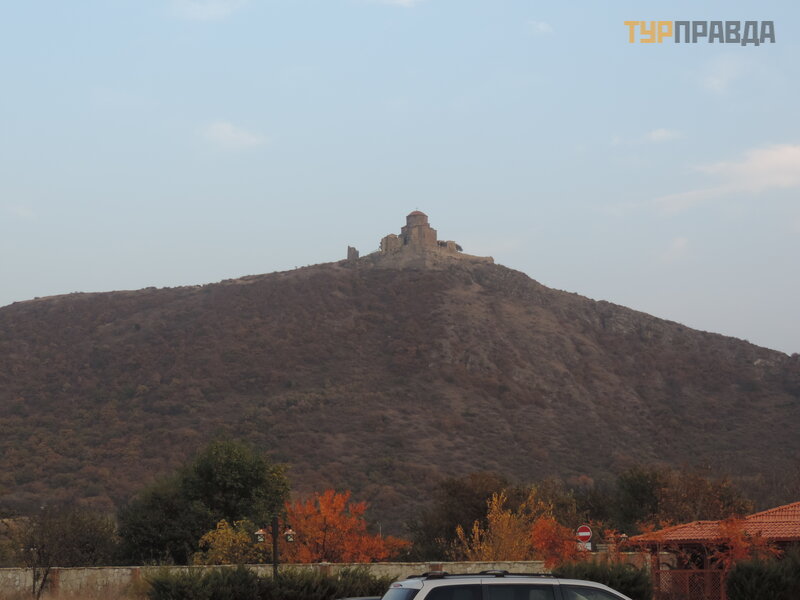

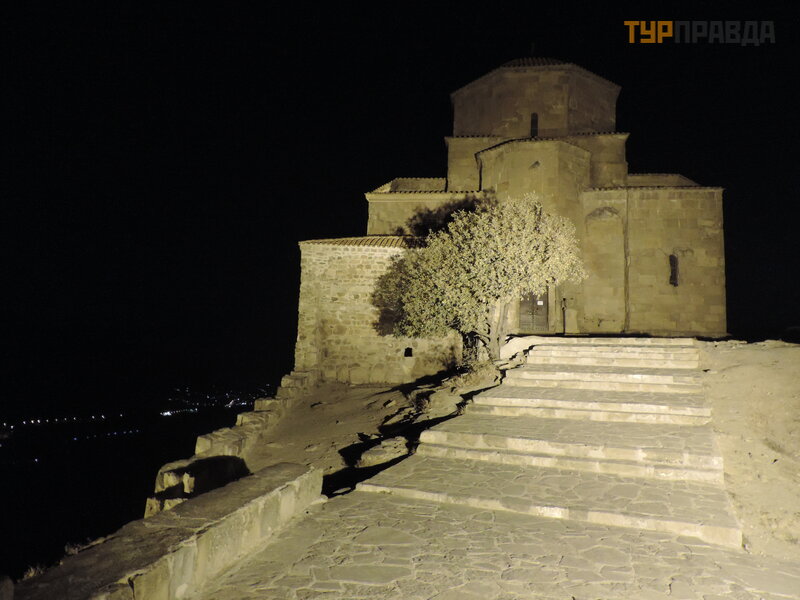
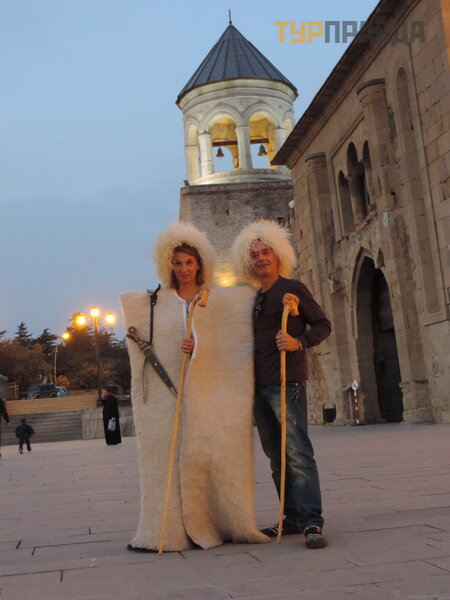




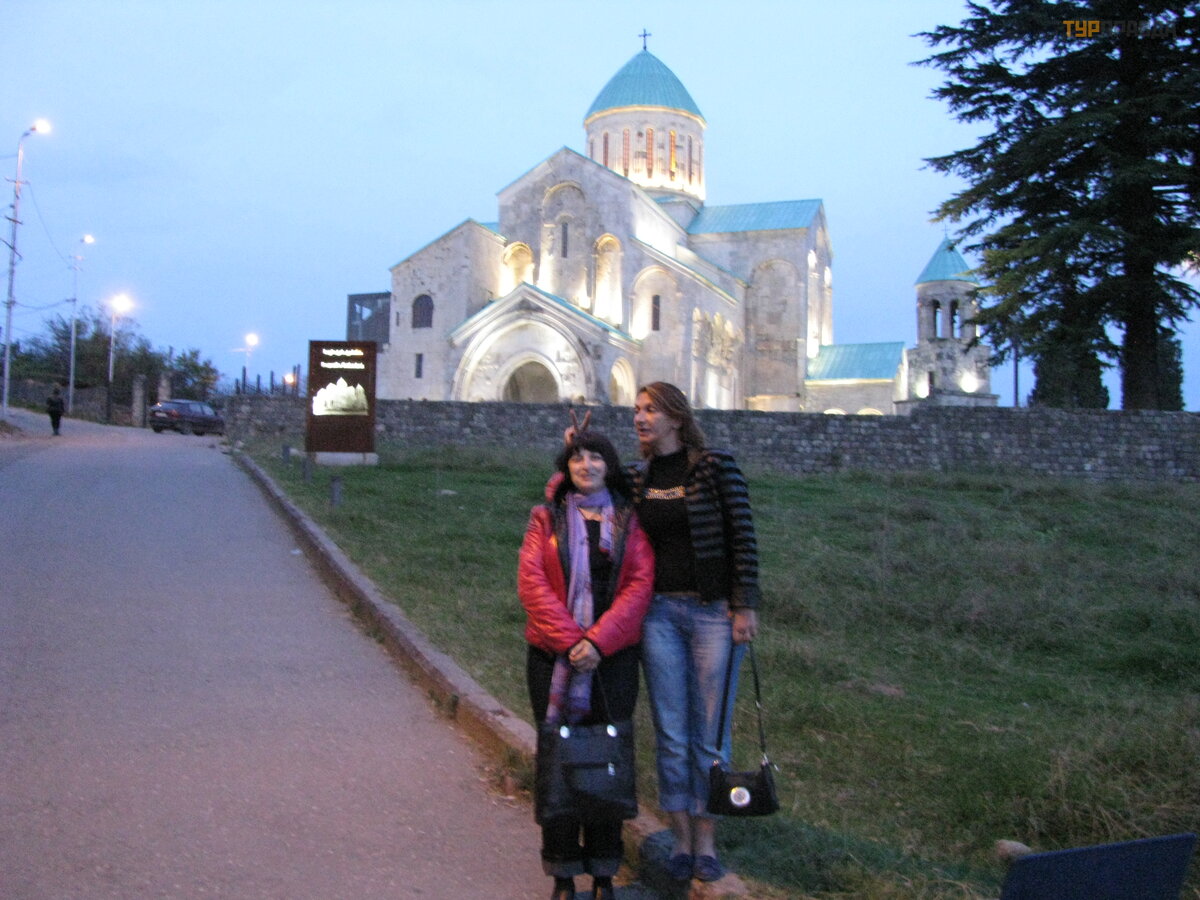

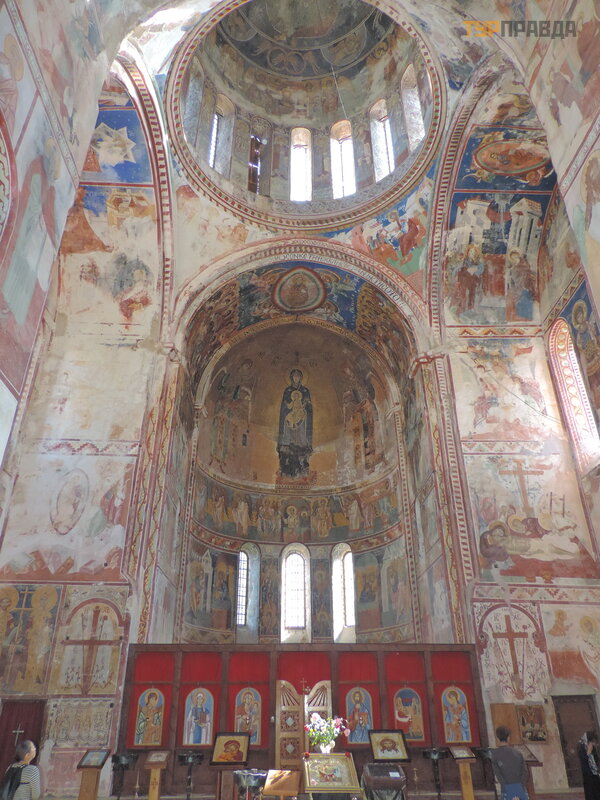











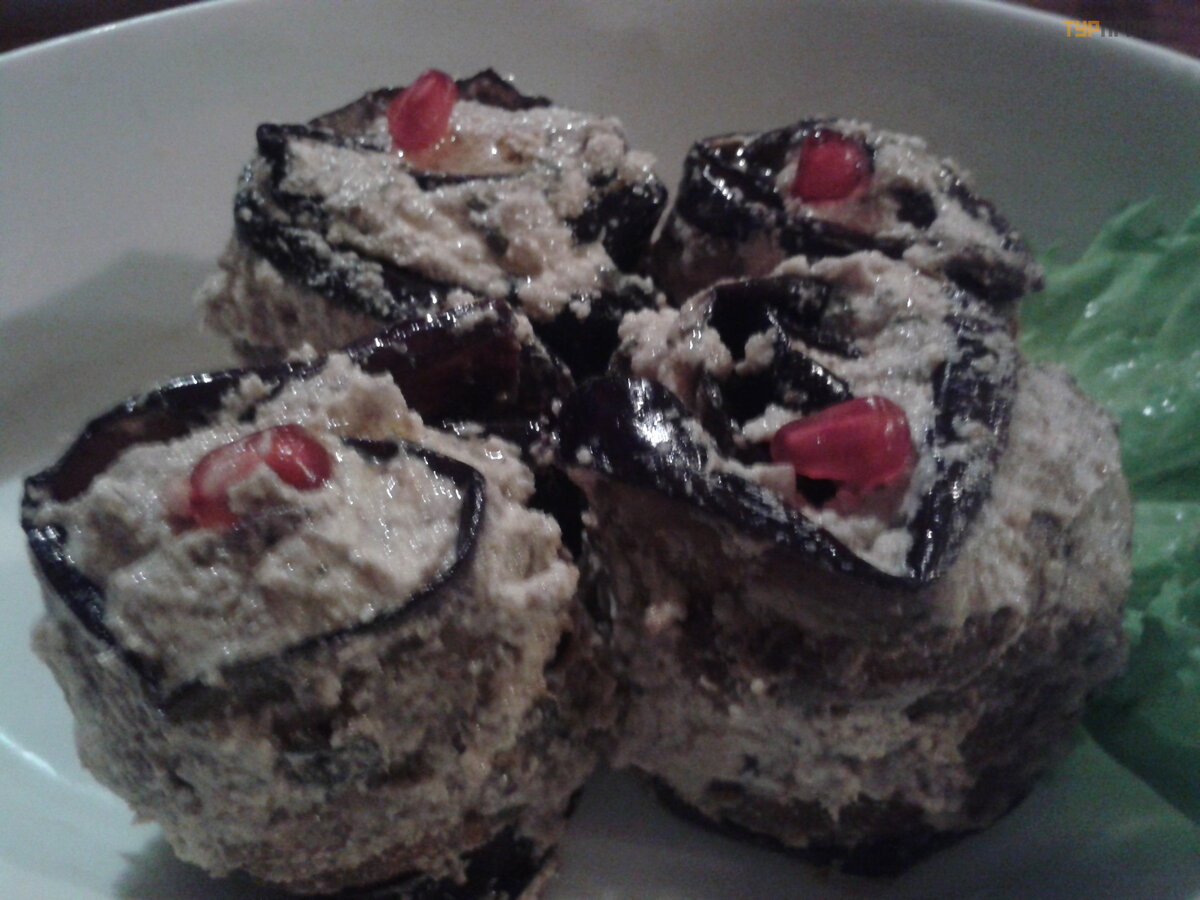
 Какой-то интерес представляет крепость Горисцихе, но, похоже, в первую очередь для историков и археологов. Крепость как крепость - разве что древняя (лет 800), живописная и очень большая. Видна Горисцихе со всех сторон, можно сделать фото и ехать дальше.
Какой-то интерес представляет крепость Горисцихе, но, похоже, в первую очередь для историков и археологов. Крепость как крепость - разве что древняя (лет 800), живописная и очень большая. Видна Горисцихе со всех сторон, можно сделать фото и ехать дальше.  По опыту поездки замечу: если грузинскому гиду 45-50 лет или больше, это интеллигент высокой пробы, успевший получить образование до тех печальных времён, когда гуманитарная помощь стала важнее гуманитарных знаний. Не жалейте денег на таких гидов, чтобы не упустить возможность много узнать о стране и пообщаться с интересными людьми. Начинаем подниматься уже вместе со Сталбером, слушая подробный рассказ о веках, которые пролетели над Уплисцихе. Здесь всегда дует сильный ветер, он уносит слова и точит камень. .
По опыту поездки замечу: если грузинскому гиду 45-50 лет или больше, это интеллигент высокой пробы, успевший получить образование до тех печальных времён, когда гуманитарная помощь стала важнее гуманитарных знаний. Не жалейте денег на таких гидов, чтобы не упустить возможность много узнать о стране и пообщаться с интересными людьми. Начинаем подниматься уже вместе со Сталбером, слушая подробный рассказ о веках, которые пролетели над Уплисцихе. Здесь всегда дует сильный ветер, он уносит слова и точит камень. . 






























































